LATIN AMERICA AT THE XV ANNIVERSARY OF KUNSTHALLE LISSABON
The Kunsthalle Lissabon presents Quinze Anos de Amor na República dos Pangolins (Fifteen Years of Love at the Pangolin Republic), the third and last exhibition with which the institution celebrates its fifteenth anniversary. On this occasion, the center has invited curator Filipa Ramos, one of the Portuguese professionals with the most international projection, who has managed to put together a roster of artists with a strong Latin American presence, with Ad Minoliti, Amalia Pica, Daniel Gustav Cramer, Flora Rebollo, Gabriel Chaile, Haris Epaminonda, Irene Kopelman, Jonathas de Andrade, Luís Lázaro Matos, Mariana Caló and Francisco Queimadela, Mounira Al Solh, Nuno Sousa Vieira, Sheroanawe Hakihiiwe, Sol Calero, Teresa Solar Abboud and Wilfredo Prieto.
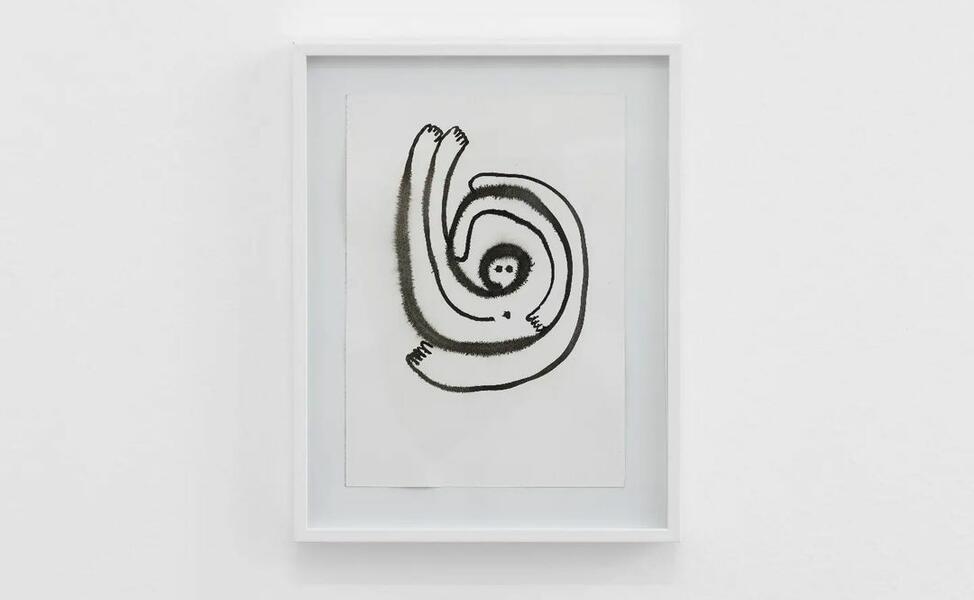
The exhibition aims, with the incorporation of the total of the fifteen artists mentioned, and who have exhibited at some point in the halls of the space, to illustrate and commemorate with one name per year the three lustrums of activity of Kunsthalle Lissabon and that make up a compendium of different styles, expressions and actions that represent the active proposal of the Portuguese center in the artistic life of Lisbon.
The works exhibited and proposed by Ramos seek to enhance the values of collaboration and community, expressions of love and regeneration, presented with different approaches. Under the allusion to the Republic of the Pangolin, a concept materialized in the flag designed by the artist Luís Lazaro Matos in 2020, the exhibition recognizes the value and alludes to the possibility that any concept can become a reality, the same process that the Kunsthalle Lissabon has followed during these years.
-
Jonathas de Andrade at Quinze Anos de Amor na República dos Pangolins, 2024. Foto Bruno Lopes (2)
-
Jonathas de Andrade at Quinze Anos de Amor na República dos Pangolins, 2024. Foto Bruno Lopes (2)
-
Quinze Anos de Amor na República dos Pangolins, 2024. Foto Bruno Lopes (1)
-
Quinze Anos de Amor na República dos Pangolins, 2024. Foto Bruno Lopes (3)
-
Wilfredo Prieto at Quinze Anos de Amor na República dos Pangolins, 2024. Foto Bruno Lopes (4)
Quinze Anos de Amor na República dos Pangolins (Fifteen Years of Love at the Pangolin Republic) can be seen until December 14 at Kunsthalle Lissabon, José Sobral Cid, 9-E, Lisbon (Portugal).
Related Topics
May interest you
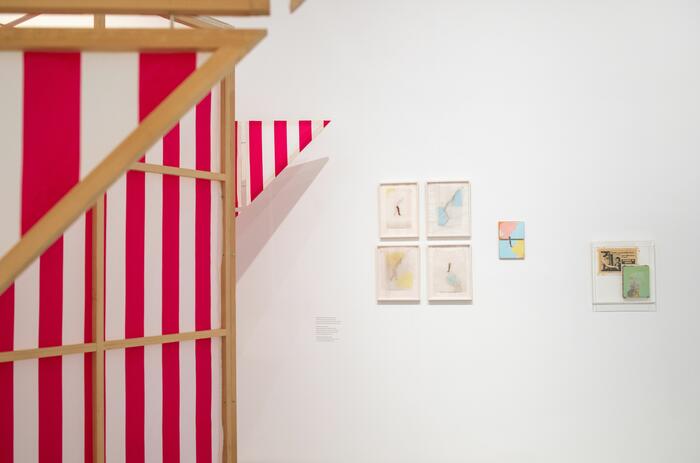
“I imagine the museum as an archipelago. It is not a continent, but an archipelago (...) The idea today is to put the world in contact with the world, to put some parts of the world in contact with other parts of the world... We must multiply the number of worlds inside museums”. Édouard Glissant (Sainte-Marie, Martinique, 1929-Paris, France, 2011) expressed his vision of museum functionality in this metaphorical way in his work Poetics of Relationship (1990).
CAN THE ARCHIPELAGO ENTER THE MUSEUM? IBEROAMERICA IN THE PROPOSAL OF THE HELGA DE ALVEAR MUSEUM
“I imagine the museum as an archipelago. It is not a continent, but an archipelago (...) The idea today is to put the world in contact with the world, to put some parts of the world in contact with other parts of the world... We must multiply the number of worlds inside museums”. Édouard Glissant (Sainte-Marie, Martinique, 1929-Paris, France, 2011) expressed his vision of museum functionality in this metaphorical way in his work Poetics of Relationship (1990).

“I imagine the museum as an archipelago. It is not a continent, but an archipelago (...) The idea today is to put the world in contact with the world, to put some parts of the world in contact with other parts of the world... We must multiply the number of worlds inside museums”. Édouard Glissant (Sainte-Marie, Martinique, 1929-Paris, France, 2011) expressed his vision of museum functionality in this metaphorical way in his work Poetics of Relationship (1990).
CAN THE ARCHIPELAGO ENTER THE MUSEUM? IBEROAMERICA IN THE PROPOSAL OF THE HELGA DE ALVEAR MUSEUM
“I imagine the museum as an archipelago. It is not a continent, but an archipelago (...) The idea today is to put the world in contact with the world, to put some parts of the world in contact with other parts of the world... We must multiply the number of worlds inside museums”. Édouard Glissant (Sainte-Marie, Martinique, 1929-Paris, France, 2011) expressed his vision of museum functionality in this metaphorical way in his work Poetics of Relationship (1990).
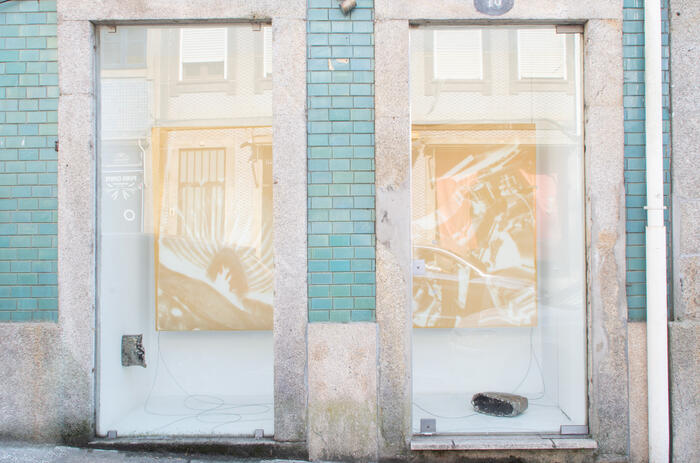
Kubikulo presents in its Oporto gallery Sol Raso, an installation by Gabriel Ribeiro (Rio de Janeiro, Brazil, 1990) that is presented as a material and superficial photographic event on polyurethane foams in which the evolution of the exposure of the materials to the elements and the sun for thirty days is captured.

One of Carlos Bunga's (Porto, Portugal, 1976) most recognizable features is his way of interacting with architectural spaces. This conversation and intervention has a formal character in the use of materials and chromatic ranges, but also by the introduction of everyday objects that, from the very conception of architecture, reside in it to complement it. This led him to be interested in the most temporary and basic architecture, with flaws in its canonical perception, but equally existing in socially unfavorable environments.
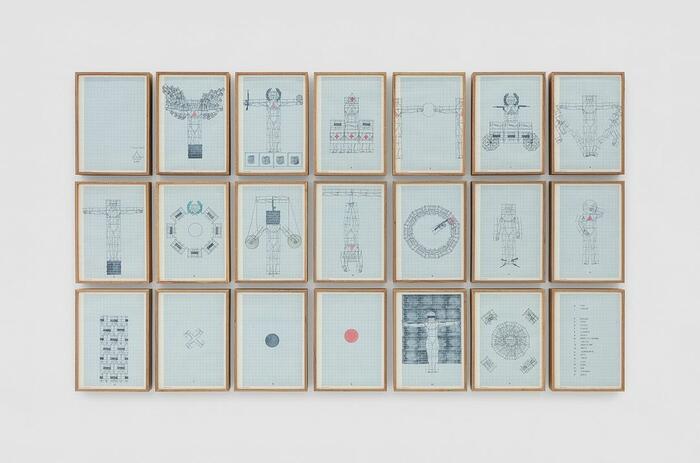
Zielinsky opened a new space in São Paulo, Brazil and presented a solo exhibition by Brazilian artist Claudio Goulart (1954-2000), whose work was developed in Amsterdam, the Netherlands, where he lived for over 30 years until he passed away due to complications from AIDS.
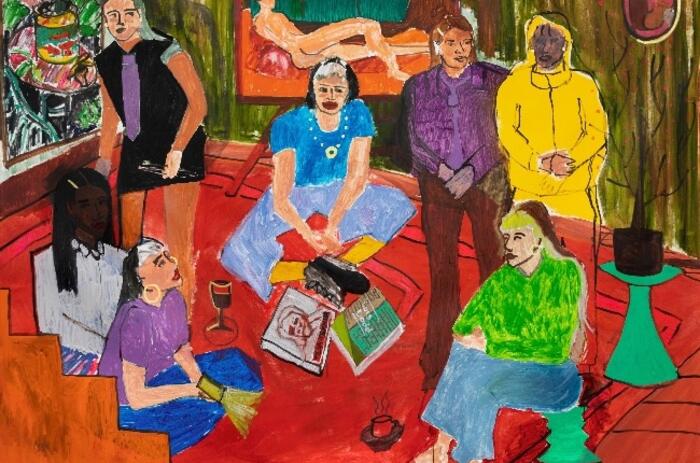
Álbum de Casi Todos (Album of Almost Everyone) is the solo exhibition of Chilean artist Pablo Linsambarth at the Instituto Cultural Peruano Norteamericano (ICPNA). It is curated by Daniel H. Rey.
THE STORIES OF PABLO LINSAMBARTH AT ICPNA
Álbum de Casi Todos (Album of Almost Everyone) is the solo exhibition of Chilean artist Pablo Linsambarth at the Instituto Cultural Peruano Norteamericano (ICPNA). It is curated by Daniel H. Rey.
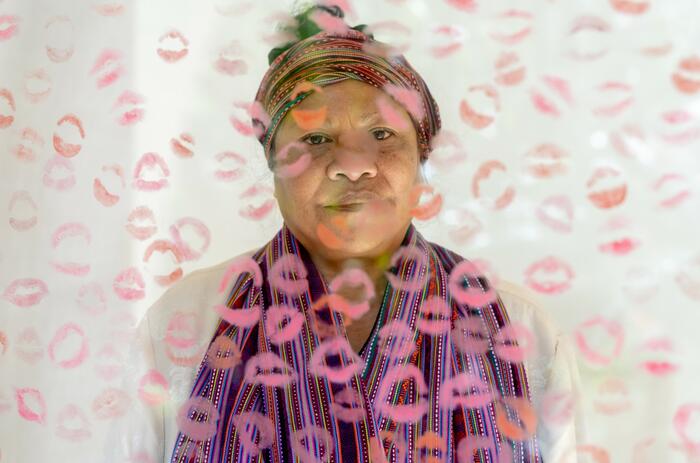
Maria Madeira is the artist representing Timor-Leste at the 60th International Venice Biennale. Timor-Leste’s inaugural pavilion coincides with the country’s 25th anniversary of independence. Commissioned by the Ministry of Youth, Sports, Arts and Culture, Democratic Republic of Timor-Leste and curated by Professor Natalie King OAM.
KISS AND DON’T TELL: TIMOR-LESTE IN THE VENICE BIENNALE
Maria Madeira is the artist representing Timor-Leste at the 60th International Venice Biennale. Timor-Leste’s inaugural pavilion coincides with the country’s 25th anniversary of independence. Commissioned by the Ministry of Youth, Sports, Arts and Culture, Democratic Republic of Timor-Leste and curated by Professor Natalie King OAM.
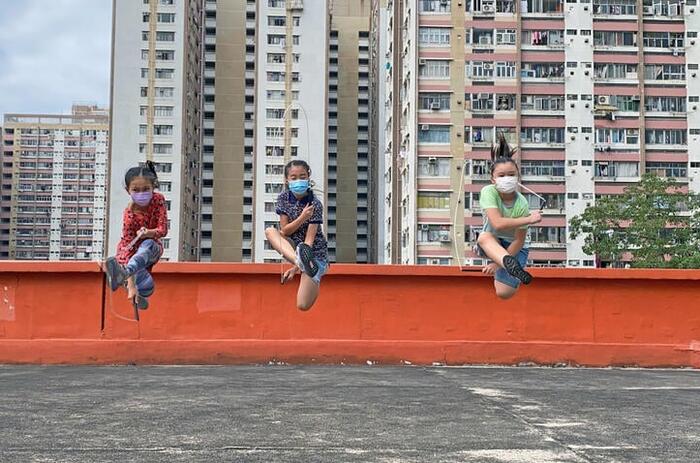
Francis Alÿs (Antwerp, Belgium, 1959) began, at the end of the last century, to abandon the exclusivity of his body as the subject of the actions of his artistic proposal to begin to explore the possibility of finding and employing other subjects for this purpose. With this idea, the figure of children gained more and more importance in his production and became the sign of identity of a new stage for the new millennium.
ALŸS AND THE COLLABORATIVE PHILOSOPHY OF THE GAME AT SERRALVES
Francis Alÿs (Antwerp, Belgium, 1959) began, at the end of the last century, to abandon the exclusivity of his body as the subject of the actions of his artistic proposal to begin to explore the possibility of finding and employing other subjects for this purpose. With this idea, the figure of children gained more and more importance in his production and became the sign of identity of a new stage for the new millennium.
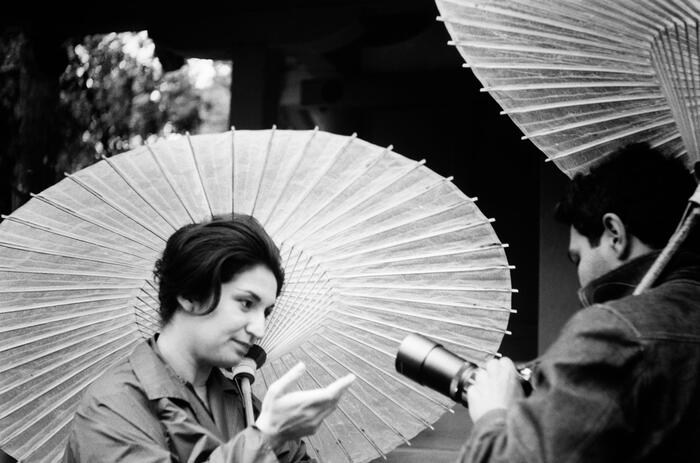
The approach and review of the work that the multidisciplinary Portuguese-Brazilian artist Fernando Lemos (Lisbon, Portugal, 1926 - São Paulo, Brazil, 2019) made in the framework of his relationship with Japan is the reason for the exhibitions that two centers of the Calouste Gulbenkian Foundation dedicate to his figure. It is worth remembering here that both of them transit in the Japanese concept that stands as the central axis of the new headquarters of the Centro de Arte Moderno, recently inaugurated, and on which the dialogue between both curatorial proposals pivots.
FERNANDO LEMOS AND JAPAN REVIEWED AT GULBENKIAN
The approach and review of the work that the multidisciplinary Portuguese-Brazilian artist Fernando Lemos (Lisbon, Portugal, 1926 - São Paulo, Brazil, 2019) made in the framework of his relationship with Japan is the reason for the exhibitions that two centers of the Calouste Gulbenkian Foundation dedicate to his figure. It is worth remembering here that both of them transit in the Japanese concept that stands as the central axis of the new headquarters of the Centro de Arte Moderno, recently inaugurated, and on which the dialogue between both curatorial proposals pivots.
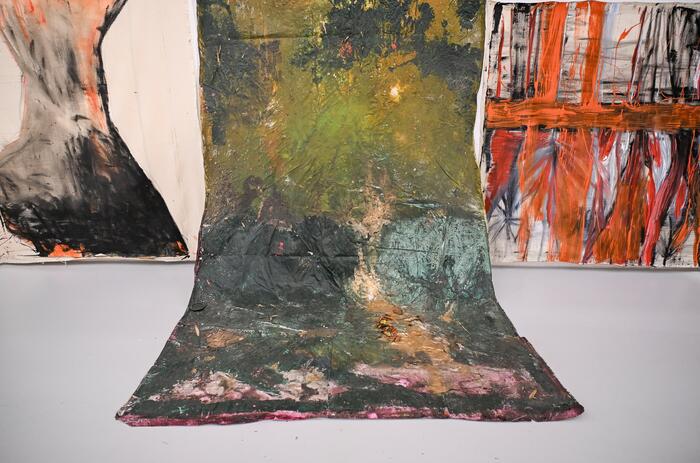
Lisbon's MAAT hosts the exhibition Disco, a show with more than half a thousand works by Vivian Suter (Buenos Aires, Argentina, 1949) with which the institution pays tribute to the pictorial production of the Swiss-Argentine artist and her particular exploration of the interaction with nature and the different techniques and possibilities applicable to painting.
VIVIAN SUTER AND THE RELEVANCE OF SURROUNDINGS AT MAAT IN LISBON
Lisbon's MAAT hosts the exhibition Disco, a show with more than half a thousand works by Vivian Suter (Buenos Aires, Argentina, 1949) with which the institution pays tribute to the pictorial production of the Swiss-Argentine artist and her particular exploration of the interaction with nature and the different techniques and possibilities applicable to painting.

“I imagine the museum as an archipelago. It is not a continent, but an archipelago (...) The idea today is to put the world in contact with the world, to put some parts of the world in contact with other parts of the world... We must multiply the number of worlds inside museums”. Édouard Glissant (Sainte-Marie, Martinique, 1929-Paris, France, 2011) expressed his vision of museum functionality in this metaphorical way in his work Poetics of Relationship (1990).
CAN THE ARCHIPELAGO ENTER THE MUSEUM? IBEROAMERICA IN THE PROPOSAL OF THE HELGA DE ALVEAR MUSEUM
“I imagine the museum as an archipelago. It is not a continent, but an archipelago (...) The idea today is to put the world in contact with the world, to put some parts of the world in contact with other parts of the world... We must multiply the number of worlds inside museums”. Édouard Glissant (Sainte-Marie, Martinique, 1929-Paris, France, 2011) expressed his vision of museum functionality in this metaphorical way in his work Poetics of Relationship (1990).

Kubikulo presents in its Oporto gallery Sol Raso, an installation by Gabriel Ribeiro (Rio de Janeiro, Brazil, 1990) that is presented as a material and superficial photographic event on polyurethane foams in which the evolution of the exposure of the materials to the elements and the sun for thirty days is captured.

One of Carlos Bunga's (Porto, Portugal, 1976) most recognizable features is his way of interacting with architectural spaces. This conversation and intervention has a formal character in the use of materials and chromatic ranges, but also by the introduction of everyday objects that, from the very conception of architecture, reside in it to complement it. This led him to be interested in the most temporary and basic architecture, with flaws in its canonical perception, but equally existing in socially unfavorable environments.

Zielinsky opened a new space in São Paulo, Brazil and presented a solo exhibition by Brazilian artist Claudio Goulart (1954-2000), whose work was developed in Amsterdam, the Netherlands, where he lived for over 30 years until he passed away due to complications from AIDS.

Álbum de Casi Todos (Album of Almost Everyone) is the solo exhibition of Chilean artist Pablo Linsambarth at the Instituto Cultural Peruano Norteamericano (ICPNA). It is curated by Daniel H. Rey.
THE STORIES OF PABLO LINSAMBARTH AT ICPNA
Álbum de Casi Todos (Album of Almost Everyone) is the solo exhibition of Chilean artist Pablo Linsambarth at the Instituto Cultural Peruano Norteamericano (ICPNA). It is curated by Daniel H. Rey.

Maria Madeira is the artist representing Timor-Leste at the 60th International Venice Biennale. Timor-Leste’s inaugural pavilion coincides with the country’s 25th anniversary of independence. Commissioned by the Ministry of Youth, Sports, Arts and Culture, Democratic Republic of Timor-Leste and curated by Professor Natalie King OAM.
KISS AND DON’T TELL: TIMOR-LESTE IN THE VENICE BIENNALE
Maria Madeira is the artist representing Timor-Leste at the 60th International Venice Biennale. Timor-Leste’s inaugural pavilion coincides with the country’s 25th anniversary of independence. Commissioned by the Ministry of Youth, Sports, Arts and Culture, Democratic Republic of Timor-Leste and curated by Professor Natalie King OAM.

Francis Alÿs (Antwerp, Belgium, 1959) began, at the end of the last century, to abandon the exclusivity of his body as the subject of the actions of his artistic proposal to begin to explore the possibility of finding and employing other subjects for this purpose. With this idea, the figure of children gained more and more importance in his production and became the sign of identity of a new stage for the new millennium.
ALŸS AND THE COLLABORATIVE PHILOSOPHY OF THE GAME AT SERRALVES
Francis Alÿs (Antwerp, Belgium, 1959) began, at the end of the last century, to abandon the exclusivity of his body as the subject of the actions of his artistic proposal to begin to explore the possibility of finding and employing other subjects for this purpose. With this idea, the figure of children gained more and more importance in his production and became the sign of identity of a new stage for the new millennium.

The approach and review of the work that the multidisciplinary Portuguese-Brazilian artist Fernando Lemos (Lisbon, Portugal, 1926 - São Paulo, Brazil, 2019) made in the framework of his relationship with Japan is the reason for the exhibitions that two centers of the Calouste Gulbenkian Foundation dedicate to his figure. It is worth remembering here that both of them transit in the Japanese concept that stands as the central axis of the new headquarters of the Centro de Arte Moderno, recently inaugurated, and on which the dialogue between both curatorial proposals pivots.
FERNANDO LEMOS AND JAPAN REVIEWED AT GULBENKIAN
The approach and review of the work that the multidisciplinary Portuguese-Brazilian artist Fernando Lemos (Lisbon, Portugal, 1926 - São Paulo, Brazil, 2019) made in the framework of his relationship with Japan is the reason for the exhibitions that two centers of the Calouste Gulbenkian Foundation dedicate to his figure. It is worth remembering here that both of them transit in the Japanese concept that stands as the central axis of the new headquarters of the Centro de Arte Moderno, recently inaugurated, and on which the dialogue between both curatorial proposals pivots.

Lisbon's MAAT hosts the exhibition Disco, a show with more than half a thousand works by Vivian Suter (Buenos Aires, Argentina, 1949) with which the institution pays tribute to the pictorial production of the Swiss-Argentine artist and her particular exploration of the interaction with nature and the different techniques and possibilities applicable to painting.
VIVIAN SUTER AND THE RELEVANCE OF SURROUNDINGS AT MAAT IN LISBON
Lisbon's MAAT hosts the exhibition Disco, a show with more than half a thousand works by Vivian Suter (Buenos Aires, Argentina, 1949) with which the institution pays tribute to the pictorial production of the Swiss-Argentine artist and her particular exploration of the interaction with nature and the different techniques and possibilities applicable to painting.

“I imagine the museum as an archipelago. It is not a continent, but an archipelago (...) The idea today is to put the world in contact with the world, to put some parts of the world in contact with other parts of the world... We must multiply the number of worlds inside museums”. Édouard Glissant (Sainte-Marie, Martinique, 1929-Paris, France, 2011) expressed his vision of museum functionality in this metaphorical way in his work Poetics of Relationship (1990).
CAN THE ARCHIPELAGO ENTER THE MUSEUM? IBEROAMERICA IN THE PROPOSAL OF THE HELGA DE ALVEAR MUSEUM
“I imagine the museum as an archipelago. It is not a continent, but an archipelago (...) The idea today is to put the world in contact with the world, to put some parts of the world in contact with other parts of the world... We must multiply the number of worlds inside museums”. Édouard Glissant (Sainte-Marie, Martinique, 1929-Paris, France, 2011) expressed his vision of museum functionality in this metaphorical way in his work Poetics of Relationship (1990).

Kubikulo presents in its Oporto gallery Sol Raso, an installation by Gabriel Ribeiro (Rio de Janeiro, Brazil, 1990) that is presented as a material and superficial photographic event on polyurethane foams in which the evolution of the exposure of the materials to the elements and the sun for thirty days is captured.

One of Carlos Bunga's (Porto, Portugal, 1976) most recognizable features is his way of interacting with architectural spaces. This conversation and intervention has a formal character in the use of materials and chromatic ranges, but also by the introduction of everyday objects that, from the very conception of architecture, reside in it to complement it. This led him to be interested in the most temporary and basic architecture, with flaws in its canonical perception, but equally existing in socially unfavorable environments.

Zielinsky opened a new space in São Paulo, Brazil and presented a solo exhibition by Brazilian artist Claudio Goulart (1954-2000), whose work was developed in Amsterdam, the Netherlands, where he lived for over 30 years until he passed away due to complications from AIDS.

Álbum de Casi Todos (Album of Almost Everyone) is the solo exhibition of Chilean artist Pablo Linsambarth at the Instituto Cultural Peruano Norteamericano (ICPNA). It is curated by Daniel H. Rey.
THE STORIES OF PABLO LINSAMBARTH AT ICPNA
Álbum de Casi Todos (Album of Almost Everyone) is the solo exhibition of Chilean artist Pablo Linsambarth at the Instituto Cultural Peruano Norteamericano (ICPNA). It is curated by Daniel H. Rey.

Maria Madeira is the artist representing Timor-Leste at the 60th International Venice Biennale. Timor-Leste’s inaugural pavilion coincides with the country’s 25th anniversary of independence. Commissioned by the Ministry of Youth, Sports, Arts and Culture, Democratic Republic of Timor-Leste and curated by Professor Natalie King OAM.
KISS AND DON’T TELL: TIMOR-LESTE IN THE VENICE BIENNALE
Maria Madeira is the artist representing Timor-Leste at the 60th International Venice Biennale. Timor-Leste’s inaugural pavilion coincides with the country’s 25th anniversary of independence. Commissioned by the Ministry of Youth, Sports, Arts and Culture, Democratic Republic of Timor-Leste and curated by Professor Natalie King OAM.

Francis Alÿs (Antwerp, Belgium, 1959) began, at the end of the last century, to abandon the exclusivity of his body as the subject of the actions of his artistic proposal to begin to explore the possibility of finding and employing other subjects for this purpose. With this idea, the figure of children gained more and more importance in his production and became the sign of identity of a new stage for the new millennium.
ALŸS AND THE COLLABORATIVE PHILOSOPHY OF THE GAME AT SERRALVES
Francis Alÿs (Antwerp, Belgium, 1959) began, at the end of the last century, to abandon the exclusivity of his body as the subject of the actions of his artistic proposal to begin to explore the possibility of finding and employing other subjects for this purpose. With this idea, the figure of children gained more and more importance in his production and became the sign of identity of a new stage for the new millennium.

The approach and review of the work that the multidisciplinary Portuguese-Brazilian artist Fernando Lemos (Lisbon, Portugal, 1926 - São Paulo, Brazil, 2019) made in the framework of his relationship with Japan is the reason for the exhibitions that two centers of the Calouste Gulbenkian Foundation dedicate to his figure. It is worth remembering here that both of them transit in the Japanese concept that stands as the central axis of the new headquarters of the Centro de Arte Moderno, recently inaugurated, and on which the dialogue between both curatorial proposals pivots.
FERNANDO LEMOS AND JAPAN REVIEWED AT GULBENKIAN
The approach and review of the work that the multidisciplinary Portuguese-Brazilian artist Fernando Lemos (Lisbon, Portugal, 1926 - São Paulo, Brazil, 2019) made in the framework of his relationship with Japan is the reason for the exhibitions that two centers of the Calouste Gulbenkian Foundation dedicate to his figure. It is worth remembering here that both of them transit in the Japanese concept that stands as the central axis of the new headquarters of the Centro de Arte Moderno, recently inaugurated, and on which the dialogue between both curatorial proposals pivots.

Lisbon's MAAT hosts the exhibition Disco, a show with more than half a thousand works by Vivian Suter (Buenos Aires, Argentina, 1949) with which the institution pays tribute to the pictorial production of the Swiss-Argentine artist and her particular exploration of the interaction with nature and the different techniques and possibilities applicable to painting.
VIVIAN SUTER AND THE RELEVANCE OF SURROUNDINGS AT MAAT IN LISBON
Lisbon's MAAT hosts the exhibition Disco, a show with more than half a thousand works by Vivian Suter (Buenos Aires, Argentina, 1949) with which the institution pays tribute to the pictorial production of the Swiss-Argentine artist and her particular exploration of the interaction with nature and the different techniques and possibilities applicable to painting.

“I imagine the museum as an archipelago. It is not a continent, but an archipelago (...) The idea today is to put the world in contact with the world, to put some parts of the world in contact with other parts of the world... We must multiply the number of worlds inside museums”. Édouard Glissant (Sainte-Marie, Martinique, 1929-Paris, France, 2011) expressed his vision of museum functionality in this metaphorical way in his work Poetics of Relationship (1990).
CAN THE ARCHIPELAGO ENTER THE MUSEUM? IBEROAMERICA IN THE PROPOSAL OF THE HELGA DE ALVEAR MUSEUM
“I imagine the museum as an archipelago. It is not a continent, but an archipelago (...) The idea today is to put the world in contact with the world, to put some parts of the world in contact with other parts of the world... We must multiply the number of worlds inside museums”. Édouard Glissant (Sainte-Marie, Martinique, 1929-Paris, France, 2011) expressed his vision of museum functionality in this metaphorical way in his work Poetics of Relationship (1990).

Kubikulo presents in its Oporto gallery Sol Raso, an installation by Gabriel Ribeiro (Rio de Janeiro, Brazil, 1990) that is presented as a material and superficial photographic event on polyurethane foams in which the evolution of the exposure of the materials to the elements and the sun for thirty days is captured.

One of Carlos Bunga's (Porto, Portugal, 1976) most recognizable features is his way of interacting with architectural spaces. This conversation and intervention has a formal character in the use of materials and chromatic ranges, but also by the introduction of everyday objects that, from the very conception of architecture, reside in it to complement it. This led him to be interested in the most temporary and basic architecture, with flaws in its canonical perception, but equally existing in socially unfavorable environments.

Zielinsky opened a new space in São Paulo, Brazil and presented a solo exhibition by Brazilian artist Claudio Goulart (1954-2000), whose work was developed in Amsterdam, the Netherlands, where he lived for over 30 years until he passed away due to complications from AIDS.

Álbum de Casi Todos (Album of Almost Everyone) is the solo exhibition of Chilean artist Pablo Linsambarth at the Instituto Cultural Peruano Norteamericano (ICPNA). It is curated by Daniel H. Rey.
THE STORIES OF PABLO LINSAMBARTH AT ICPNA
Álbum de Casi Todos (Album of Almost Everyone) is the solo exhibition of Chilean artist Pablo Linsambarth at the Instituto Cultural Peruano Norteamericano (ICPNA). It is curated by Daniel H. Rey.

Maria Madeira is the artist representing Timor-Leste at the 60th International Venice Biennale. Timor-Leste’s inaugural pavilion coincides with the country’s 25th anniversary of independence. Commissioned by the Ministry of Youth, Sports, Arts and Culture, Democratic Republic of Timor-Leste and curated by Professor Natalie King OAM.
KISS AND DON’T TELL: TIMOR-LESTE IN THE VENICE BIENNALE
Maria Madeira is the artist representing Timor-Leste at the 60th International Venice Biennale. Timor-Leste’s inaugural pavilion coincides with the country’s 25th anniversary of independence. Commissioned by the Ministry of Youth, Sports, Arts and Culture, Democratic Republic of Timor-Leste and curated by Professor Natalie King OAM.

Francis Alÿs (Antwerp, Belgium, 1959) began, at the end of the last century, to abandon the exclusivity of his body as the subject of the actions of his artistic proposal to begin to explore the possibility of finding and employing other subjects for this purpose. With this idea, the figure of children gained more and more importance in his production and became the sign of identity of a new stage for the new millennium.
ALŸS AND THE COLLABORATIVE PHILOSOPHY OF THE GAME AT SERRALVES
Francis Alÿs (Antwerp, Belgium, 1959) began, at the end of the last century, to abandon the exclusivity of his body as the subject of the actions of his artistic proposal to begin to explore the possibility of finding and employing other subjects for this purpose. With this idea, the figure of children gained more and more importance in his production and became the sign of identity of a new stage for the new millennium.

The approach and review of the work that the multidisciplinary Portuguese-Brazilian artist Fernando Lemos (Lisbon, Portugal, 1926 - São Paulo, Brazil, 2019) made in the framework of his relationship with Japan is the reason for the exhibitions that two centers of the Calouste Gulbenkian Foundation dedicate to his figure. It is worth remembering here that both of them transit in the Japanese concept that stands as the central axis of the new headquarters of the Centro de Arte Moderno, recently inaugurated, and on which the dialogue between both curatorial proposals pivots.
FERNANDO LEMOS AND JAPAN REVIEWED AT GULBENKIAN
The approach and review of the work that the multidisciplinary Portuguese-Brazilian artist Fernando Lemos (Lisbon, Portugal, 1926 - São Paulo, Brazil, 2019) made in the framework of his relationship with Japan is the reason for the exhibitions that two centers of the Calouste Gulbenkian Foundation dedicate to his figure. It is worth remembering here that both of them transit in the Japanese concept that stands as the central axis of the new headquarters of the Centro de Arte Moderno, recently inaugurated, and on which the dialogue between both curatorial proposals pivots.

Lisbon's MAAT hosts the exhibition Disco, a show with more than half a thousand works by Vivian Suter (Buenos Aires, Argentina, 1949) with which the institution pays tribute to the pictorial production of the Swiss-Argentine artist and her particular exploration of the interaction with nature and the different techniques and possibilities applicable to painting.
VIVIAN SUTER AND THE RELEVANCE OF SURROUNDINGS AT MAAT IN LISBON
Lisbon's MAAT hosts the exhibition Disco, a show with more than half a thousand works by Vivian Suter (Buenos Aires, Argentina, 1949) with which the institution pays tribute to the pictorial production of the Swiss-Argentine artist and her particular exploration of the interaction with nature and the different techniques and possibilities applicable to painting.

“I imagine the museum as an archipelago. It is not a continent, but an archipelago (...) The idea today is to put the world in contact with the world, to put some parts of the world in contact with other parts of the world... We must multiply the number of worlds inside museums”. Édouard Glissant (Sainte-Marie, Martinique, 1929-Paris, France, 2011) expressed his vision of museum functionality in this metaphorical way in his work Poetics of Relationship (1990).
CAN THE ARCHIPELAGO ENTER THE MUSEUM? IBEROAMERICA IN THE PROPOSAL OF THE HELGA DE ALVEAR MUSEUM
“I imagine the museum as an archipelago. It is not a continent, but an archipelago (...) The idea today is to put the world in contact with the world, to put some parts of the world in contact with other parts of the world... We must multiply the number of worlds inside museums”. Édouard Glissant (Sainte-Marie, Martinique, 1929-Paris, France, 2011) expressed his vision of museum functionality in this metaphorical way in his work Poetics of Relationship (1990).

Kubikulo presents in its Oporto gallery Sol Raso, an installation by Gabriel Ribeiro (Rio de Janeiro, Brazil, 1990) that is presented as a material and superficial photographic event on polyurethane foams in which the evolution of the exposure of the materials to the elements and the sun for thirty days is captured.

One of Carlos Bunga's (Porto, Portugal, 1976) most recognizable features is his way of interacting with architectural spaces. This conversation and intervention has a formal character in the use of materials and chromatic ranges, but also by the introduction of everyday objects that, from the very conception of architecture, reside in it to complement it. This led him to be interested in the most temporary and basic architecture, with flaws in its canonical perception, but equally existing in socially unfavorable environments.

Zielinsky opened a new space in São Paulo, Brazil and presented a solo exhibition by Brazilian artist Claudio Goulart (1954-2000), whose work was developed in Amsterdam, the Netherlands, where he lived for over 30 years until he passed away due to complications from AIDS.

Álbum de Casi Todos (Album of Almost Everyone) is the solo exhibition of Chilean artist Pablo Linsambarth at the Instituto Cultural Peruano Norteamericano (ICPNA). It is curated by Daniel H. Rey.
THE STORIES OF PABLO LINSAMBARTH AT ICPNA
Álbum de Casi Todos (Album of Almost Everyone) is the solo exhibition of Chilean artist Pablo Linsambarth at the Instituto Cultural Peruano Norteamericano (ICPNA). It is curated by Daniel H. Rey.

Maria Madeira is the artist representing Timor-Leste at the 60th International Venice Biennale. Timor-Leste’s inaugural pavilion coincides with the country’s 25th anniversary of independence. Commissioned by the Ministry of Youth, Sports, Arts and Culture, Democratic Republic of Timor-Leste and curated by Professor Natalie King OAM.
KISS AND DON’T TELL: TIMOR-LESTE IN THE VENICE BIENNALE
Maria Madeira is the artist representing Timor-Leste at the 60th International Venice Biennale. Timor-Leste’s inaugural pavilion coincides with the country’s 25th anniversary of independence. Commissioned by the Ministry of Youth, Sports, Arts and Culture, Democratic Republic of Timor-Leste and curated by Professor Natalie King OAM.

Francis Alÿs (Antwerp, Belgium, 1959) began, at the end of the last century, to abandon the exclusivity of his body as the subject of the actions of his artistic proposal to begin to explore the possibility of finding and employing other subjects for this purpose. With this idea, the figure of children gained more and more importance in his production and became the sign of identity of a new stage for the new millennium.
ALŸS AND THE COLLABORATIVE PHILOSOPHY OF THE GAME AT SERRALVES
Francis Alÿs (Antwerp, Belgium, 1959) began, at the end of the last century, to abandon the exclusivity of his body as the subject of the actions of his artistic proposal to begin to explore the possibility of finding and employing other subjects for this purpose. With this idea, the figure of children gained more and more importance in his production and became the sign of identity of a new stage for the new millennium.

The approach and review of the work that the multidisciplinary Portuguese-Brazilian artist Fernando Lemos (Lisbon, Portugal, 1926 - São Paulo, Brazil, 2019) made in the framework of his relationship with Japan is the reason for the exhibitions that two centers of the Calouste Gulbenkian Foundation dedicate to his figure. It is worth remembering here that both of them transit in the Japanese concept that stands as the central axis of the new headquarters of the Centro de Arte Moderno, recently inaugurated, and on which the dialogue between both curatorial proposals pivots.
FERNANDO LEMOS AND JAPAN REVIEWED AT GULBENKIAN
The approach and review of the work that the multidisciplinary Portuguese-Brazilian artist Fernando Lemos (Lisbon, Portugal, 1926 - São Paulo, Brazil, 2019) made in the framework of his relationship with Japan is the reason for the exhibitions that two centers of the Calouste Gulbenkian Foundation dedicate to his figure. It is worth remembering here that both of them transit in the Japanese concept that stands as the central axis of the new headquarters of the Centro de Arte Moderno, recently inaugurated, and on which the dialogue between both curatorial proposals pivots.

Lisbon's MAAT hosts the exhibition Disco, a show with more than half a thousand works by Vivian Suter (Buenos Aires, Argentina, 1949) with which the institution pays tribute to the pictorial production of the Swiss-Argentine artist and her particular exploration of the interaction with nature and the different techniques and possibilities applicable to painting.
VIVIAN SUTER AND THE RELEVANCE OF SURROUNDINGS AT MAAT IN LISBON
Lisbon's MAAT hosts the exhibition Disco, a show with more than half a thousand works by Vivian Suter (Buenos Aires, Argentina, 1949) with which the institution pays tribute to the pictorial production of the Swiss-Argentine artist and her particular exploration of the interaction with nature and the different techniques and possibilities applicable to painting.




